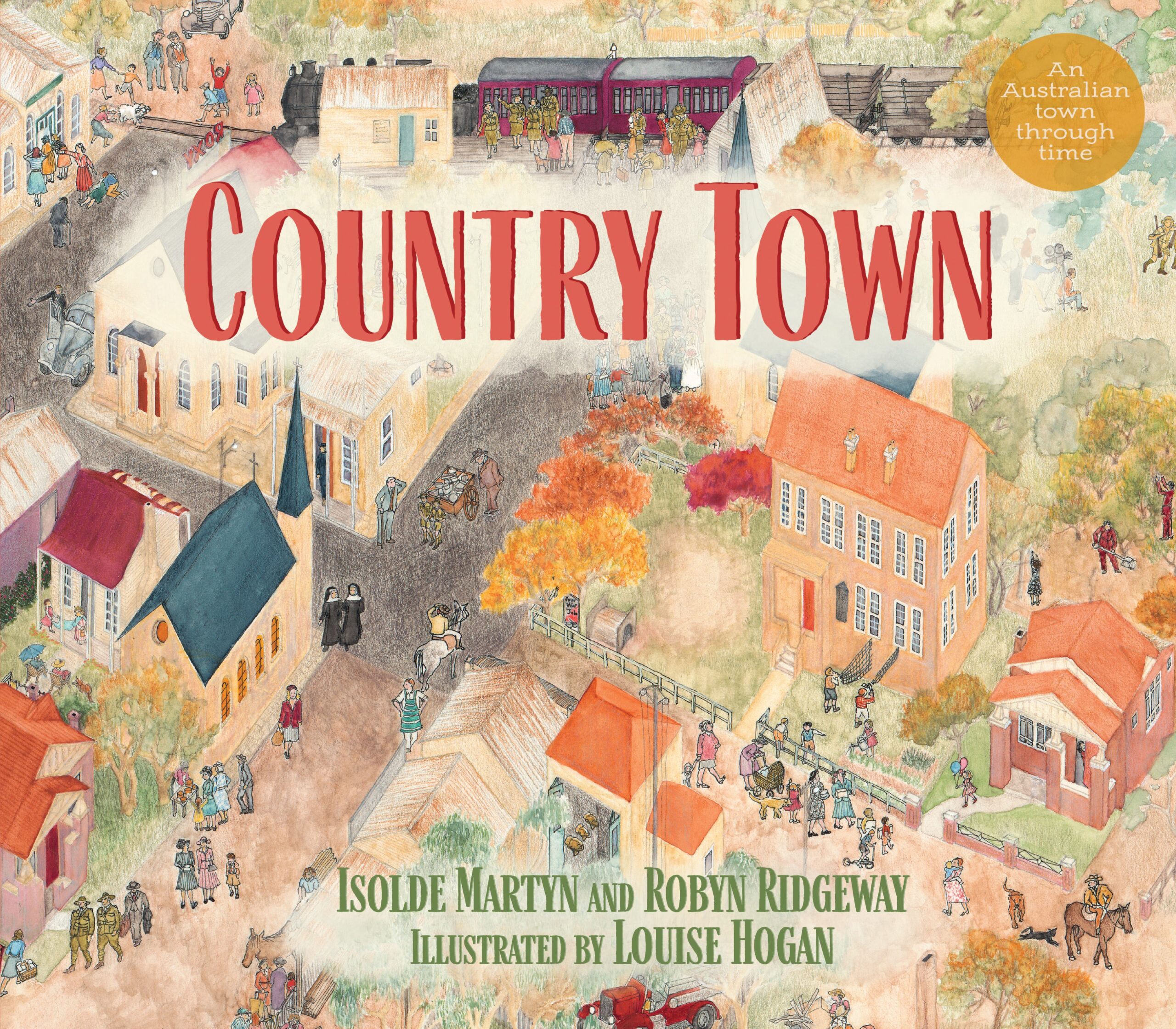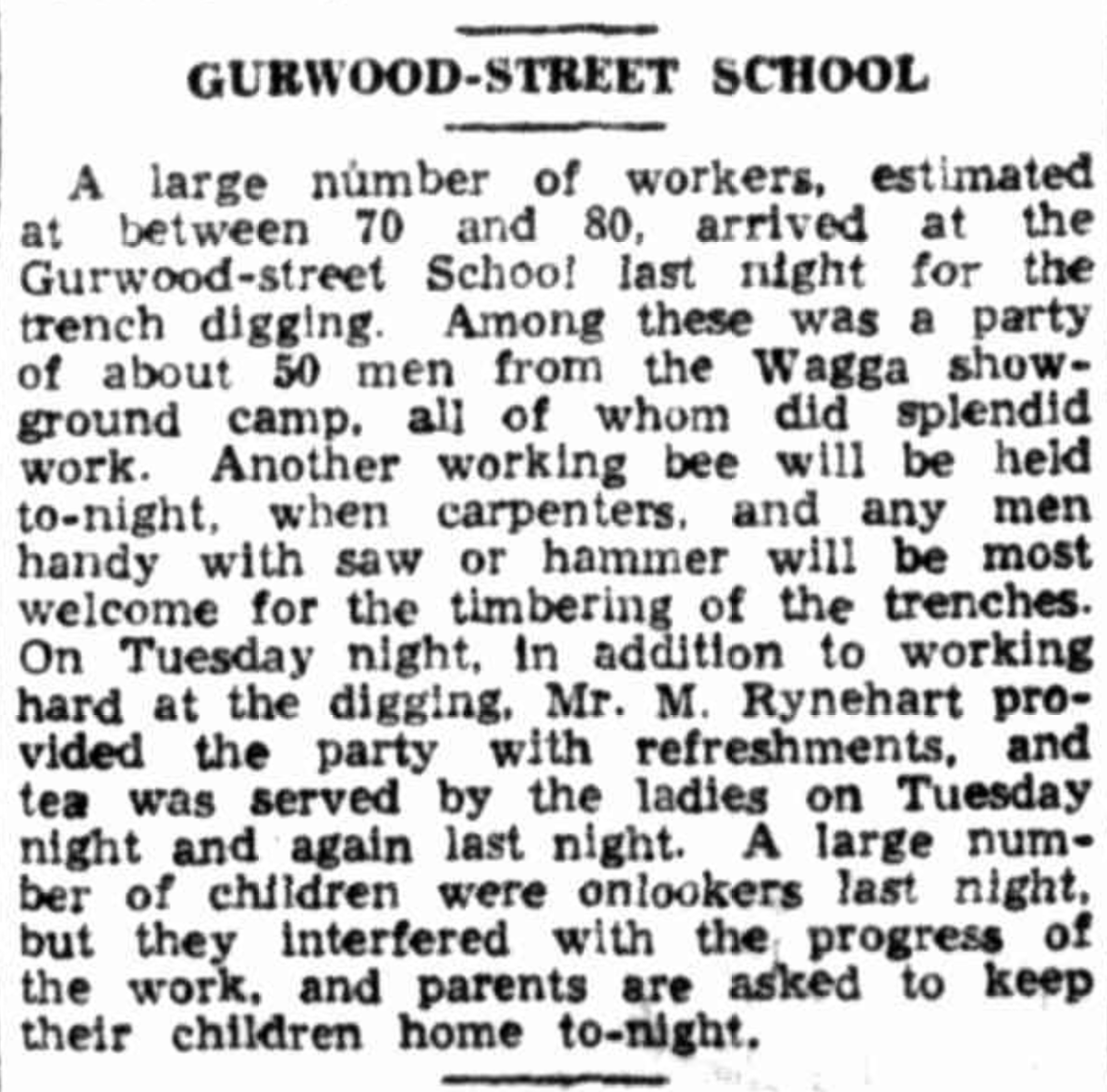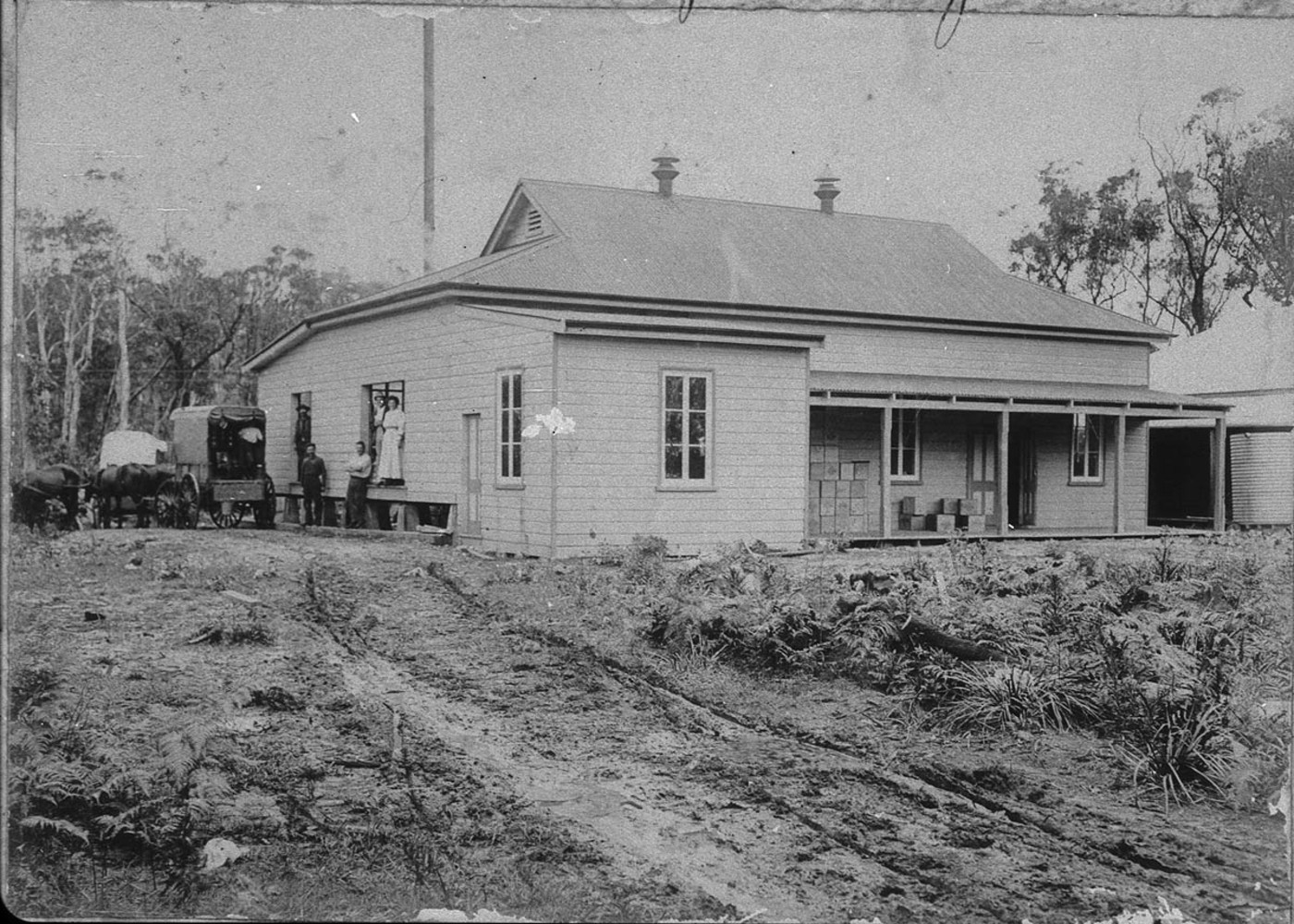
Time-traveling through a country town
The children’s picture book, Country Town, invites young readers to flip through key moments in Australian history and explore the impact through the lens of an imaginary country town. Published in 2023, Country Town was authored by Isolde Martyn and Robyn Ridgeway, with vibrant illustrations by Louise Hogan. It has been shortlisted for the 2024 Children’s Book Council of Australia Book of the Year Awards and the 2024 NSW Premier's History Awards -Young People's History Prize.
‘The book shows changes over the decades from a First Nations Peoples’ camp on a river crossing and ancient overland route through to the modern day. The text invites the reader to discover the little stories in the illustrations as well as explaining how the growing community is impacted by the outside world,’ says Isolde.
We spoke with Isolde and Robyn about the book and how Trove was used to research it.

Once upon a town
While the book time-travels through life in a fictional Australian town, Trove was crucial to the historical research for the book.
‘We made the town imaginary so it would have a wide appeal, and we could draw on the experiences of real towns. That’s where Trove was such a delight to use,’ Isolde explains.
‘Although the illustrations showed the imaginary town, we peppered our text with newspaper quotes from Trove about real places. Readers can see the social changes, but we’ve also woven in many of the themes of Australia’s history like gold rushes and the world wars. Our town was even on the itinerary of the Queen’s visit in 1954!’, she says.
Country Town features many stories from Trove that detail Australia’s past.
‘We drew on articles as varied as bushranger holdups, end of war celebrations, changing fashions, swagmen and, yes, the Queen’s visit in 1954,’ Isolde says.
One piece of history that gets a mention is the shortage of elastic during World War II. Isolde discovered this amusing article from Smith’s Weekly while researching wartime Australia in Trove.
Another article from Trove tells the story about the trenches that were dug in school playgrounds during World War II in case of an enemy bombing raid. An extract from this Daily Advertiser story was published in Country Town.

Collaborating on the book
The idea for Country Town came to Isolde when she was working at Macquarie University in the 1980s.
‘One of my tasks was to research almost every town in Australia for the Bicentenary volume Events and Places. That was what gave me the idea for a project for children using a hypothetical inland town,’ says Isolde.
Isolde eventually teamed up with illustrator Louise Hogan and co-author Robyn Ridgeway.
‘I am a Thungutti woman, my family originally came from the North coast of NSW, near Cresent Head and Kempsey. My Grandmother moved to Sydney to find a better life for herself and her children,’ Robyn explains.
‘The writing of Country Town was well underway when I came onboard. Isolde needed input with an Aboriginal perspective and a mutual friend suggested me. We spoke on the phone, and she posted me a copy of the book so far, and even though it was a black and white print, I was hooked,’ Robyn says.
Sharing Australia’s story
Robyn spoke about the importance of Aboriginal Studies and how stories like Country Town can help educate younger readers.
‘I grew up in an era where little to nothing was taught in schools about Aboriginal people or their histories. Life eventually led me into teaching. I teach Aboriginal Studies at a Diploma level, and I also teach HSC/preliminary Aboriginal Studies for TAFE Digital NSW,’ says Robyn.
‘But Aboriginal Studies needs to be taught in Primary Schools as well, and utilising Country Town is a good way to begin this process,’ she says.
She goes on to explain how the book takes readers on a journey from an Aboriginal campsite to a thriving modern-day town, while also touching on ‘a great many of the issues that the people would have had to deal with.’
‘This is all done in a manner suited to the age level of the students,’ Robyn explains.
The importance of local history
Trove has always been a valuable resource for uncovering local history, and Isolde puts the significance of this into context.
‘Understanding local history gives children a sense of community and it opens discussion on all sorts of issues,’ Isolde says.
‘We are getting responses from teacher-librarians telling us how Country Town has inspired their students to consider what their local ‘Country’ used to look like, who were the traditional owners and what factors caused a town to develop. Was there a gold find in the district that brought prosperity to the district? Or maybe there were natural disasters or a lack of a railway that hindered the town’s progress,’ explains Isolde.
She then shared with us a remarkable project that was inspired by the book and the practice of local history research.
‘The students at Wyndham, a little school down near Bega, have been inspired to write the history of their village and they have been interviewing some of the oldest inhabitants. This is not only giving them a sense of how their local community developed but is opening up communication between young and old,’ Isolde says.

Kind words on Trove
Isolde and Robyn both praised Trove and its importance to the research and education sectors.
‘Trove is a wonderful national resource for historians and anyone researching Australia’s past. When I first worked as a researcher in Sydney, Trove did not exist and while it was a wonderful experience to explore what the NSW Archives, NSW State Library, and Powerhouse Museum had to offer, being able to research so many collections online makes it so much easier,’ explains Isolde.
‘The other wonderful aspect is coming across gems of information. For any novelist researching a particular era, Trove is a precious resource that brings the past alive,’ Isolde says.
Robyn has been sharing Trove with her fellow teachers and says that ‘spaces like Trove are important because there are people out there that have information that if shared could be put to good use.’
If you’ve been inspired to use Trove for your own local history research or perhaps to write a historical fiction book of your own, learn how to get started with Trove.
You might also enjoy reading Trove’s interview with children’s book author Gabrielle Wang.